When it comes to transforming your garden into an oasis, creative landscaping plays a crucial role in achieving that dream. A well-designed garden can serve as a personal retreat, a place to entertain guests, and even an extension of your home’s aesthetic appeal. Whether you have a small backyard or a sprawling estate, landscaping offers endless possibilities for customizing your outdoor space to reflect your style and meet your functional needs. In this comprehensive guide, we’ll explore creative garden landscaping ideas and tips to help you design the perfect outdoor space.
Table of Contents:
- Introduction to Garden Landscaping
- Understanding Your Space
- Key Elements of Garden Landscaping
- Hardscaping
- Softscaping
- Choosing a Garden Style
- Creative Landscaping Ideas for Small Gardens
- Landscaping for Large Gardens
- Sustainable and Eco-Friendly Landscaping
- How to Incorporate Water Features
- Outdoor Lighting Ideas for Your Garden
- Tips for Maintaining Your Garden
- Conclusion
1. Introduction to Garden Landscaping

Garden landscaping is more than just planting flowers and adding a few trees; it’s about creating a harmonious environment where nature and design blend seamlessly. The right landscaping can increase property value, improve your quality of life, and reduce energy costs through natural shading and insulation.
Whether you’re starting from scratch or redesigning an existing space, creative garden landscaping requires careful planning, innovative ideas, and attention to detail.
2. Understanding Your Space
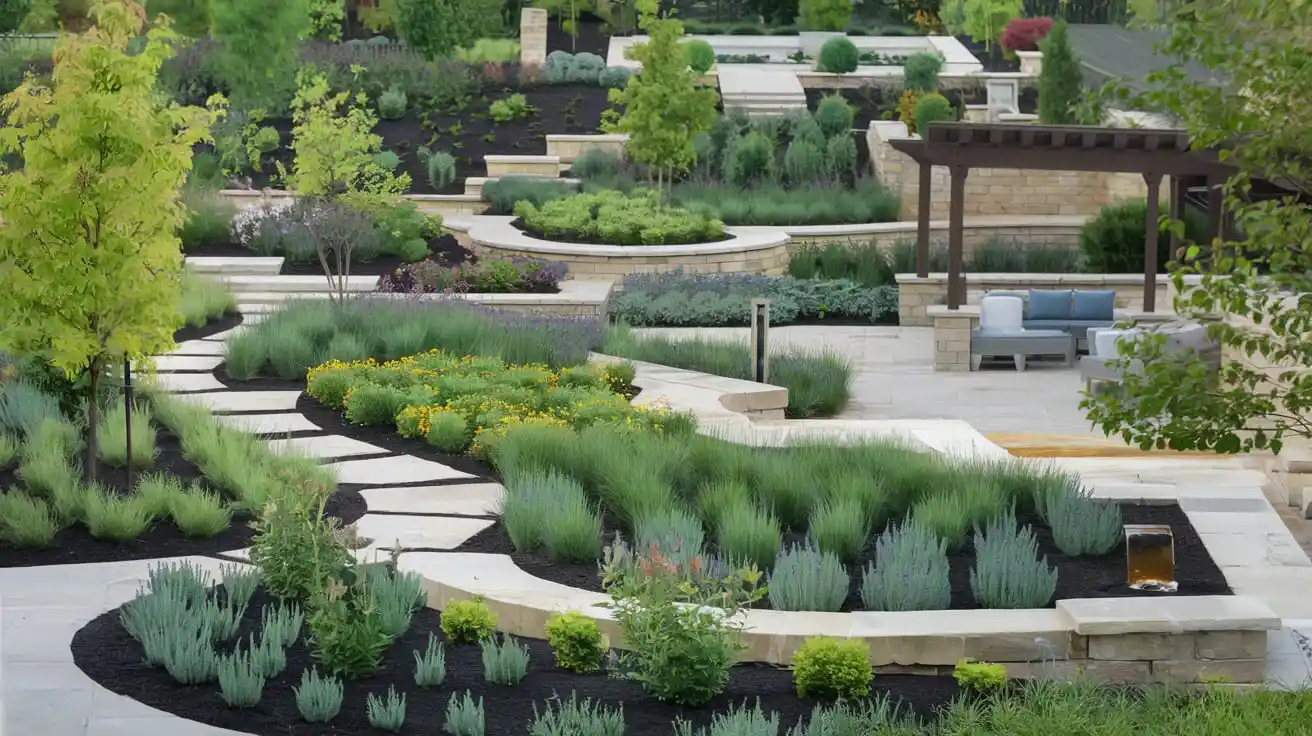
Before diving into landscaping ideas, it’s essential to evaluate your outdoor space. Understanding the size, shape, and natural features of your garden will guide your design choices.
Assess Your Garden:
- Soil Quality: Determine the type of soil in your garden. Sandy, clay, or loamy soil will affect the types of plants you can grow.
- Climate: Understand your local climate, including temperature ranges, precipitation levels, and growing seasons.
- Sunlight: Track the areas that receive full sunlight and those that remain shaded throughout the day.
- Drainage: Ensure proper drainage to prevent waterlogging, which can damage plants and hardscaping elements.
3. Key Elements of Garden Landscaping
In landscaping, there are two main categories: hardscaping and softscaping. Both are integral to creating a balanced and functional garden.
Hardscaping
Hardscaping refers to the non-living elements of your garden, such as walkways, patios, and retaining walls. These features provide structure and define different areas of your outdoor space.
- Pathways: Use materials like stone, brick, or gravel to create walkways that guide visitors through your garden.
- Patios and Decks: Extend your living space outdoors with a patio or deck. These areas are perfect for dining, lounging, or entertaining.
- Retaining Walls: If your garden is on a slope, retaining walls help prevent soil erosion and create terraced planting areas.
- Pergolas and Gazebos: Add vertical interest and create shaded areas with structures like pergolas or gazebos.
Softscaping
Softscaping involves all the living elements in your garden, including plants, trees, shrubs, and flowers. The right combination of greenery can add texture, color, and movement to your outdoor space.
- Flower Beds: Use a variety of perennials, annuals, and bulbs to create vibrant flower beds.
- Shrubs and Hedges: These provide natural boundaries and can add privacy.
- Trees: Trees offer shade, beauty, and seasonal interest.
- Ground Cover: Use ground cover plants like moss or creeping thyme to fill in gaps and reduce the need for mulch or gravel.
4. Choosing a Garden Style
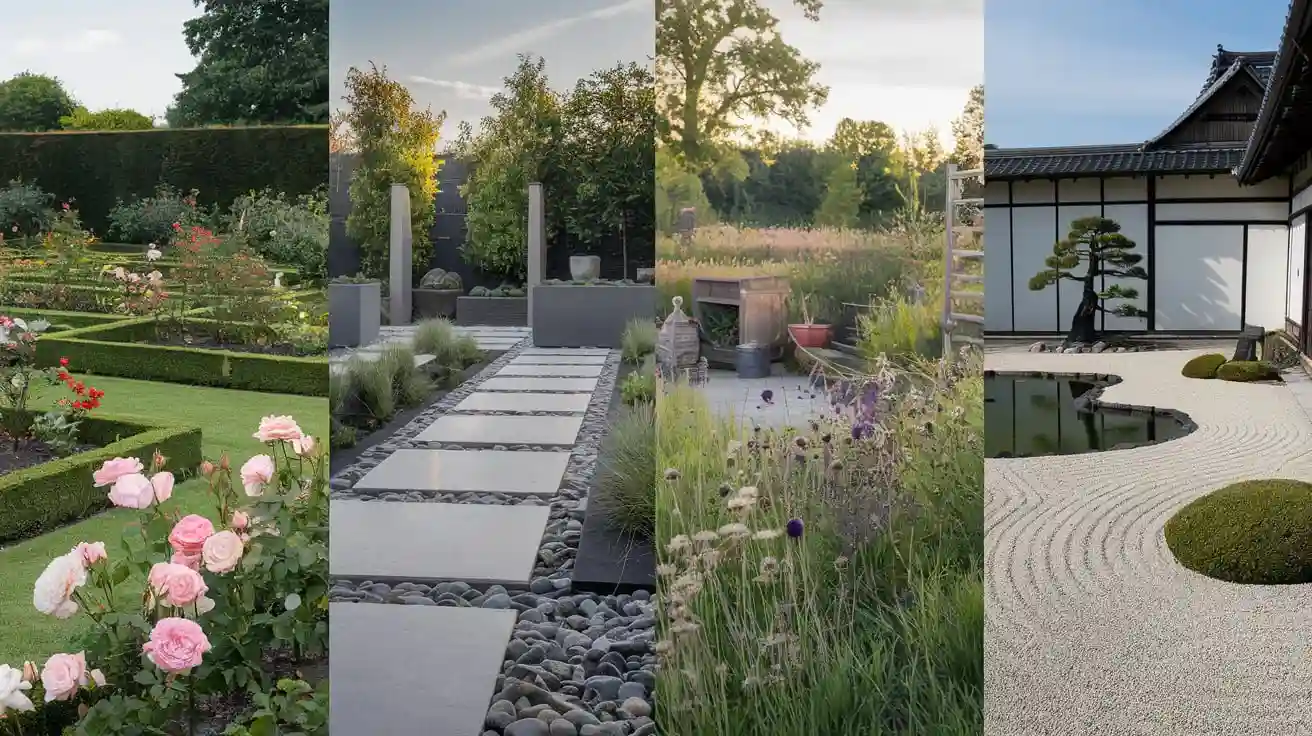
The design of your garden should reflect your style and complement the architecture of your home. Here are some popular garden styles to consider:
1. Modern Minimalist Garden:
Characterized by clean lines, geometric shapes, and a focus on hardscaping. Choose sleek materials like concrete and steel, and incorporate drought-tolerant plants like succulents and ornamental grasses.
2. Cottage Garden:
This style is all about creating a romantic, wildflower-filled space with an informal layout. Mix a variety of colorful perennials, climbing roses, and fragrant herbs to achieve that overgrown look.
3. Japanese Zen Garden:
For a peaceful, meditative space, focus on simple elements like gravel, moss, stone lanterns, and water features. Incorporate plants like bamboo, Japanese maple, and evergreen shrubs for year-round interest.
4. Mediterranean Garden:
Perfect for warmer climates, this garden style features terracotta pots, lavender, rosemary, and olive trees. Use natural stone for pathways and seating areas to evoke the feeling of a Mediterranean villa.
5. Tropical Garden:
If you live in a warm, humid climate, consider a tropical garden filled with lush foliage, vibrant flowers, and large-leaf plants like palms, ferns, and philodendrons.
5. Creative Landscaping Ideas for Small Gardens
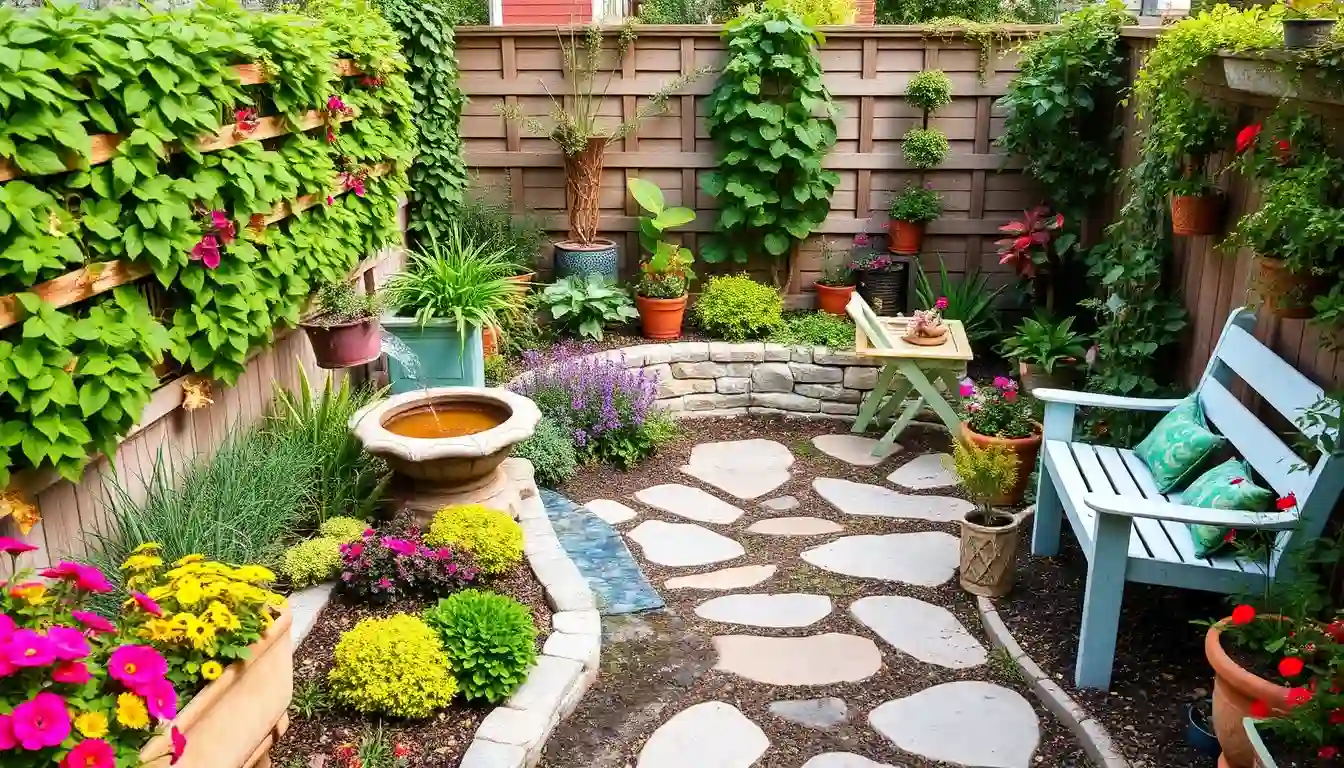
Limited space doesn’t mean limited potential. With the right approach, even the smallest gardens can feel expansive and inviting.
- Vertical Gardening: Maximize your space by growing plants vertically. Install trellises, hanging baskets, or living walls to add height and greenery.
- Multipurpose Furniture: Opt for furniture that doubles as storage or seating to save space.
- Mirrors: Strategically place mirrors to reflect light and create the illusion of a larger space.
- Compact Water Features: Small fountains or pondless waterfalls can add tranquility without taking up much room.
- Potted Plants: Container gardening allows you to easily move plants around to create new arrangements.
6. Landscaping for Large Gardens
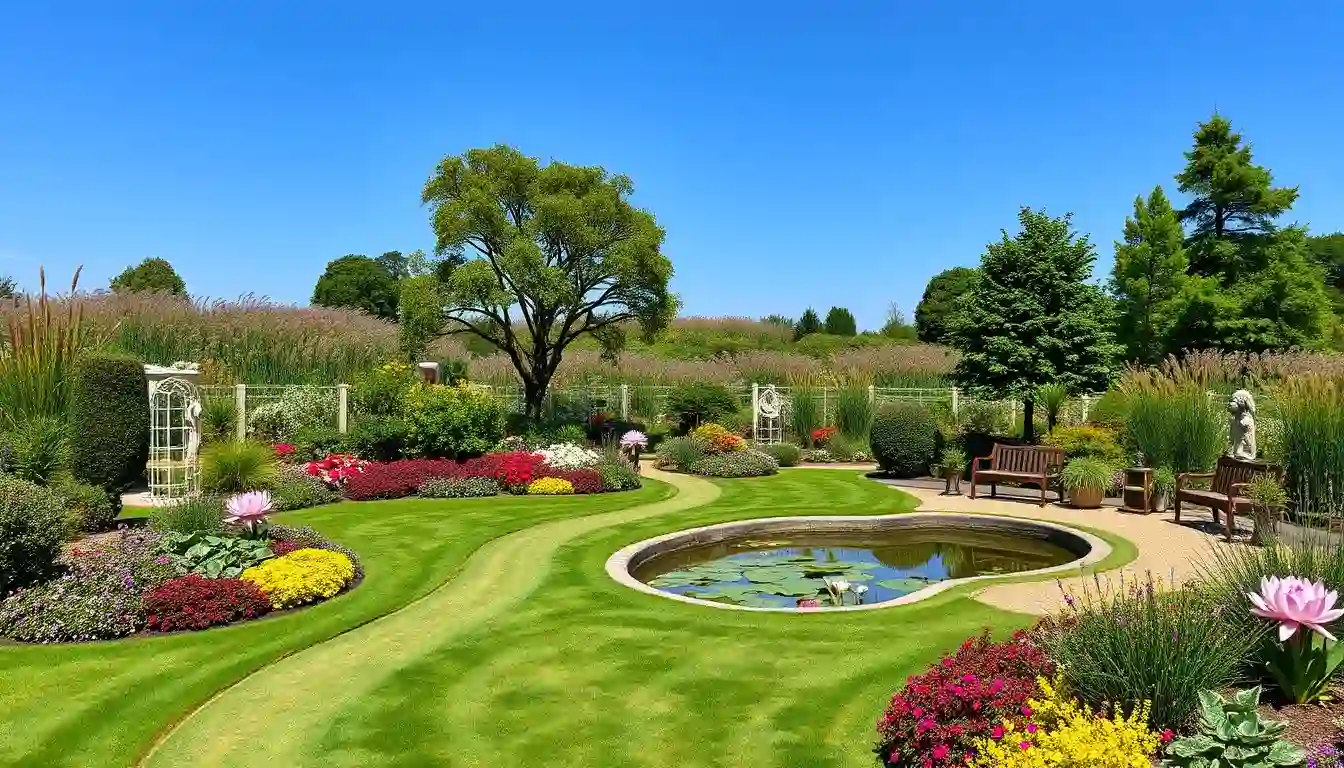
For those with more space, the possibilities are endless. Here are some ideas to make the most of a large garden:
- Zoning: Divide your garden into different zones, such as a relaxation area, dining space, and a vegetable garden.
- Large Water Features: A pond, stream, or waterfall can become a focal point in your landscape design.
- Orchards and Vegetable Gardens: Grow your fruit and vegetables by dedicating part of your garden to an orchard or vegetable patch.
- Winding Pathways: Create long, meandering paths that encourage exploration.
- Wildflower Meadow: Transform part of your garden into a natural wildflower meadow to attract pollinators and add a splash of color.
7. Sustainable and Eco-Friendly Landscaping
Eco-friendly landscaping is a growing trend as more people look for ways to reduce their environmental footprint. Sustainable garden design involves conserving water, reducing waste, and choosing native plants.
- Rain Gardens: A rain garden is a planted depression that absorbs runoff from roofs, driveways, and sidewalks, helping to reduce flooding and erosion.
- Xeriscaping: This water-efficient landscaping method uses drought-tolerant plants, reducing the need for irrigation.
- Composting: Create a composting system to recycle garden waste and improve soil health.
- Native Plants: Use native plants that are adapted to your local climate, which will require less water and maintenance.
8. How to Incorporate Water Features
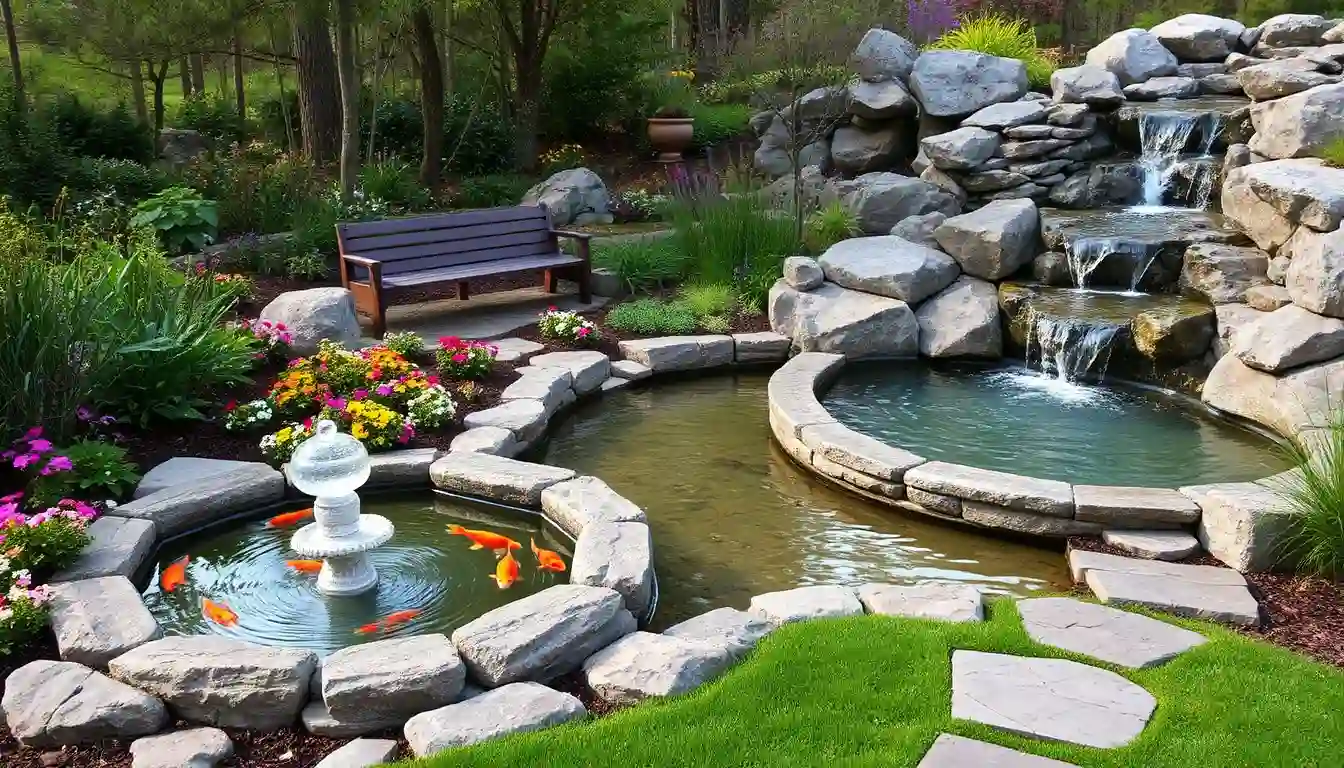
Water features can add a soothing element to your garden, whether it’s a simple birdbath or a grand fountain. Here are some ideas for incorporating water features into your landscape design:
- Fountains: A small fountain can serve as a focal point in a courtyard or patio area.
- Ponds: Add a pond to your garden to create a tranquil atmosphere. You can even introduce fish or aquatic plants.
- Waterfalls: If you have a sloped garden, a cascading waterfall can add movement and sound.
- Rain Chains: Replace traditional downspouts with decorative rain chains to guide rainwater into a barrel or garden bed.
9. Outdoor Lighting Ideas for Your Garden
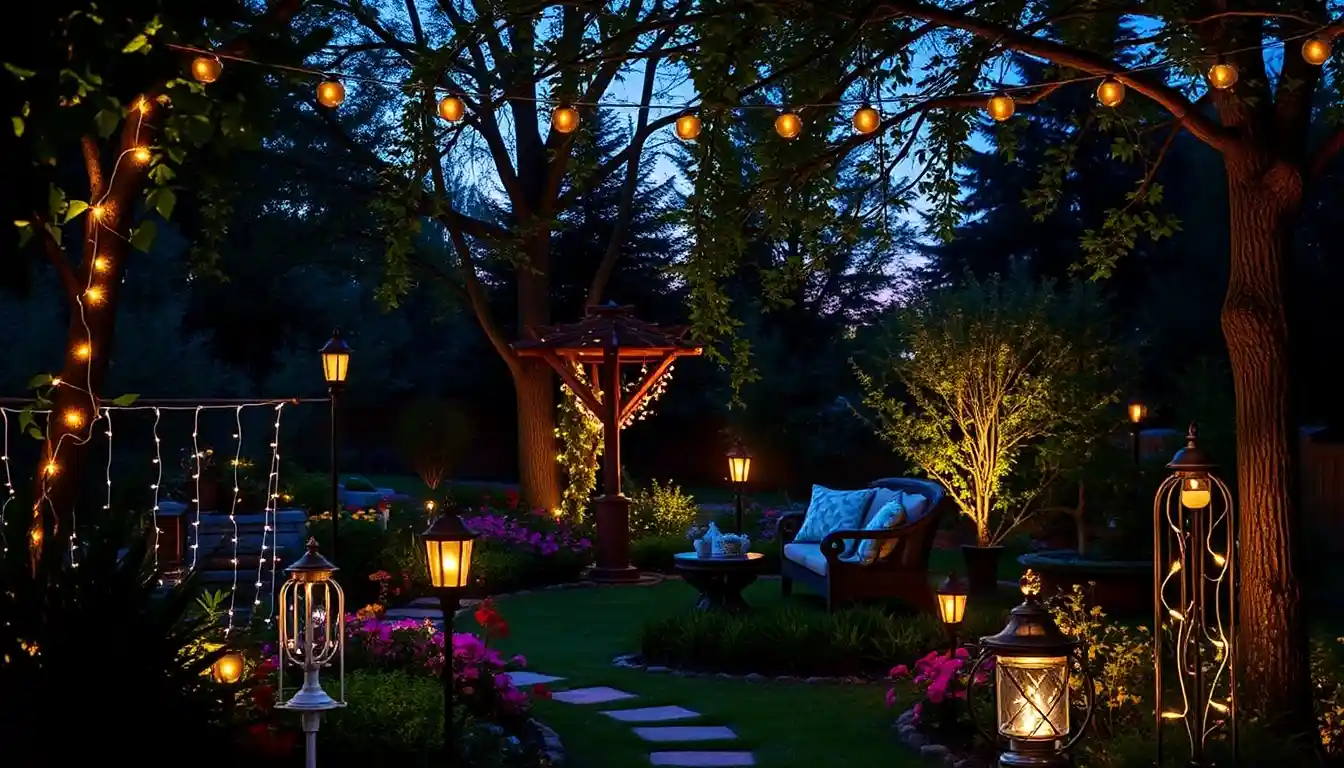
Outdoor lighting is essential for extending the use of your garden into the evening. Proper lighting also enhances the safety and security of your space.
- String Lights: Drape string lights along fences, pergolas, or trees for a warm, inviting glow.
- Pathway Lights: Install solar-powered lights along garden paths to guide visitors and highlight landscaping features.
- Spotlights: Use spotlights to illuminate trees, statues, or water features for dramatic effect.
- Lanterns and Candles: Create a cozy ambiance with lanterns or candle holders placed around seating areas.
10. Tips for Maintaining Your Garden
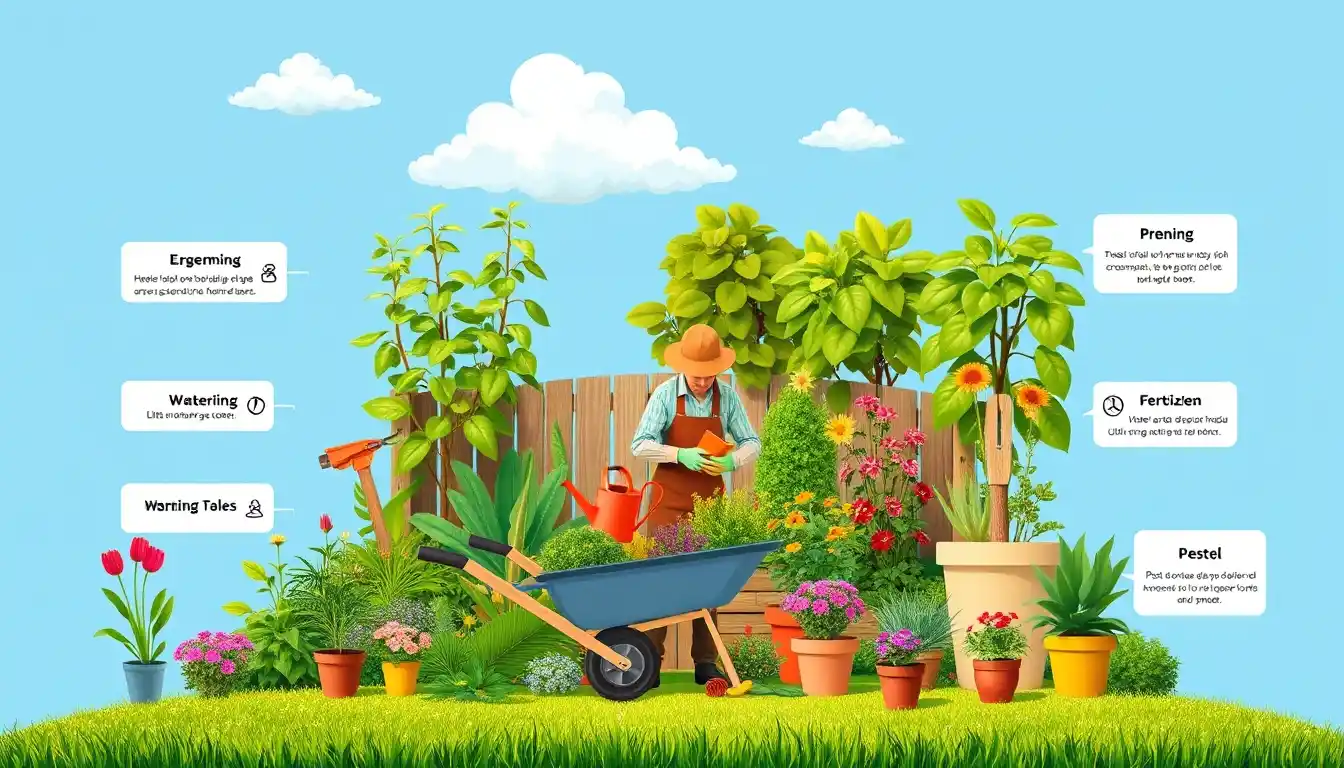
A beautiful garden requires regular maintenance to stay in top shape. Here are some tips to keep your outdoor space looking its best year-round:
- Pruning: Regularly prune shrubs and trees to encourage healthy growth and prevent overgrowth.
- Watering: Water plants in the early morning or late evening to reduce evaporation. Use drip irrigation systems to conserve water.
- Mulching: Apply mulch to flower beds and around trees to retain moisture and suppress weeds.
- Fertilizing: Feed your plants with organic fertilizers to promote healthy growth.
- Weeding: Stay on top of weeding to prevent invasive plants from taking over your garden.
Conclusion
Creative garden landscaping ideas that allow you to transform your outdoor space into a personalized oasis. By combining thoughtful design with practical elements, you can create a garden that not only looks beautiful but also serves as a functional and enjoyable space for you and your family. Whether you’re working with a small backyard or a large estate, the key to success is careful planning, attention to detail, and ongoing maintenance. Happy gardening!

